kanagawa
Hakone Onsen: Your Complete Guide to Kanagawa’s Hot Spring Town
James Lau
Posted on December 14, 2021
Share:
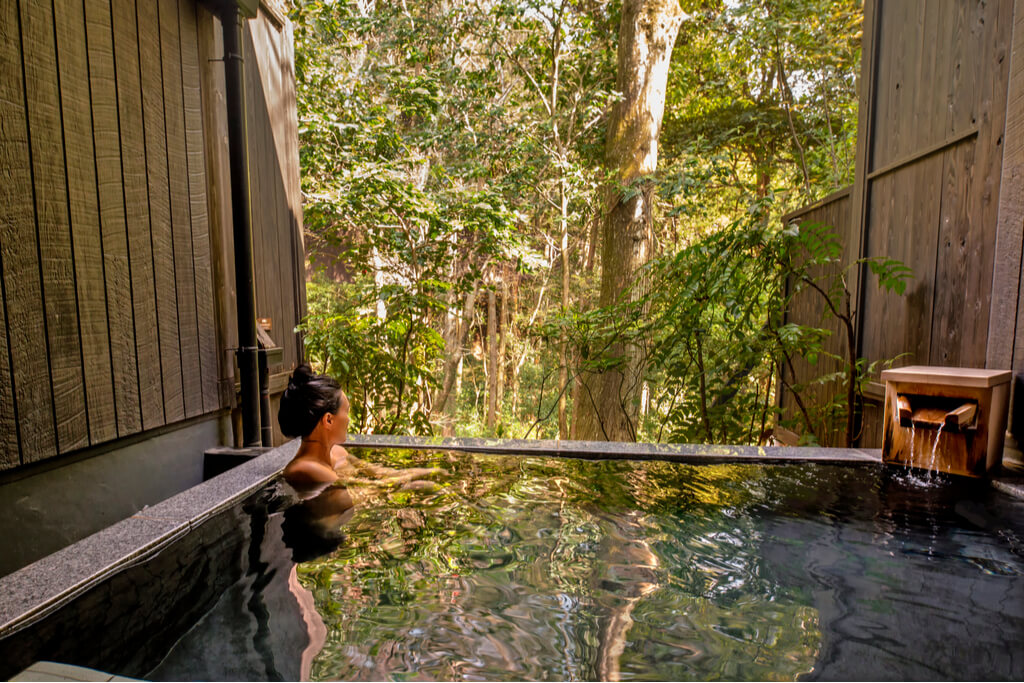
Less than 100 kilometers away from Tokyo and nestled in the Fuji-Hakone-Izu National Park, Hakone is renowned throughout Japan for its natural beauty, views of Mount Fuji and Ashinoko, and the numerous Hakone onsen (hot spring) baths. Thousands of domestic and international visitors flock to the small onsen town each year, looking for a break from the bustling cities.
Under the Japanese Hot Springs Act (onsenho), onsen are defined as hot water, mineral water, water vapor, and other gas gushing out from the ground with temperatures of at least 25℃ (77℉) or a certain amount of one of nineteen mineral substances.
Hakone’s onsen are heated by the ongoing hydrothermal activity of Mount Hakone, an active volcano worshipped in the past. During the Edo period, Hakone had seven natural onsen, which slowly increased throughout the Meiji and Showa periods. Today, Hakone officially boasts seventeen natural hot springs called the Hakone Ju-nana-yu (Hakone’s Seventeen Hot Spring Sources), although there are more than twenty onsen in the area.
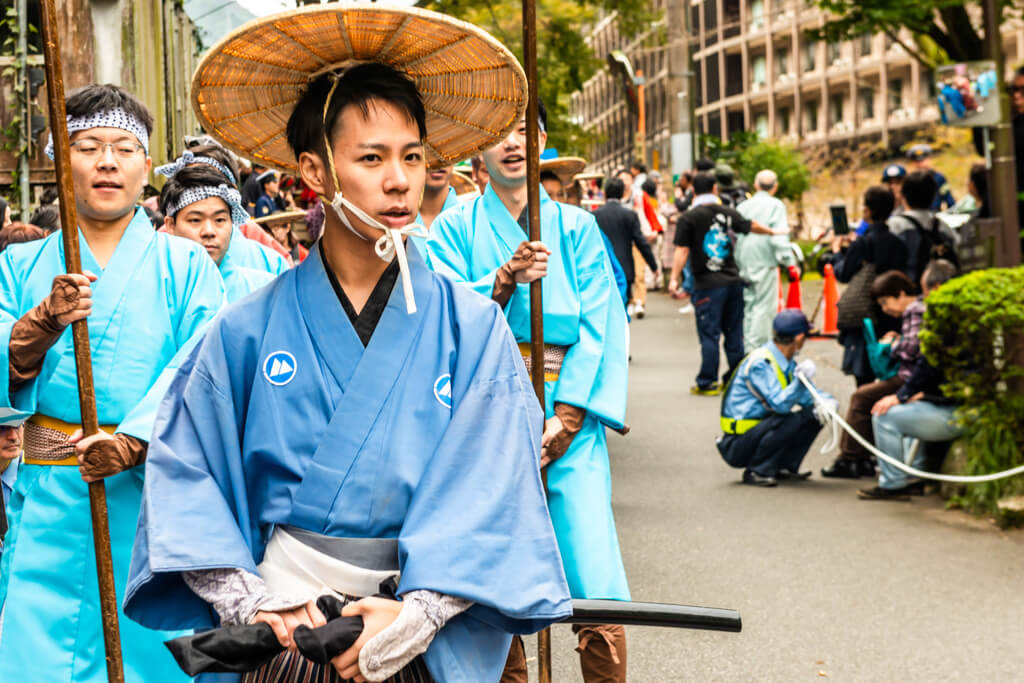
Hakone Yumoto Onsen
Located at the foot of Mt. Yusakayama, Hakone Yumoto Onsen is the oldest hot spring in Hakone, in operation since 738. Considered the “Gateway into Hakone,” travelers arrive at the Hakone Yumoto Station from Shinjuku via the Odakyu Romance Car, Hakone Tozan Railway, or bus. Today, Hakone Yumoto remains popular with tourists with its many ryokan (Japanese inns), day baths, and hotels. Many Hakone Yumoto locations offer indoor and outdoor onsen experiences that guests can enjoy.
Tonosawa Onsen
Along the Hayakawa River flows the water of the Tonosawa Onsen. Quieter than Hakone Yumoto, many Japanese authors have taken refuge in its tranquility, writing about the onsen in their works. Discovered during the Edo period, the area has since been developed into a beautiful, picturesque hot spring resort. Plenty of day baths are available to experience traditional Japanese bath culture anytime.
Can’t make it out to Kanagawa? Let Sakuraco bring Kanagawa to you! Sakuraco ships traditional Japanese sweets, snacks, and teas from local makers from all over Japan right to your door for you to enjoy!
Ohiradai Onsen
Once a prosperous woodworking village, Ohiradai is a relatively new onsen, in service since 1951. Today, Ohiradai onsen retains its homey atmosphere, although beautiful flowers decorate the town in Spring. Ohiradai’s claim to historical fame, however, lies in that important Japanese historical figure Toyotomi Hideyoshi once used the water here for a tea ceremony, dubbing the water “Hime-no-mizu” or “The Princess’ Water.”
Miyanoshita Onsen
The name Miyanoshita comes from this onsen being underneath the Kumano Shrine. People discovered natural spring waters in this area during the Muromachi period. In the Edo period, wives of daimyo (feudal lords) and wealthy merchants visited the area often.
When the port of Yokohama opened, foreigners often went to Miyanoshita onsen because foreigners couldn’t move freely, but trips to Hakone were OK. The famous Fujiya Hotel remains from that era with its beautiful Japanese-style architecture.
During the Meiji period, the town’s development received a lot of promotion, being number one in Hakone in terms of its architecture, facilities, hot springs, and customer service. Today, the town leans heavily on its historical pedigree.
Dogashima Onsen
During the Edo period, Dogashima onsen had five hot spring inns. Today, only one remains. Local folklore suggests that Muso Soseki, a Japanese Buddhist monk, established this hot spring inn. Muso Soseki was a renowned monk of his era and received the title of Kokushi, a national Zen teacher appointed by Emperor Go-Daigo. These onsen are situated at the bottom of a deep valley and are known for their chloride baths.
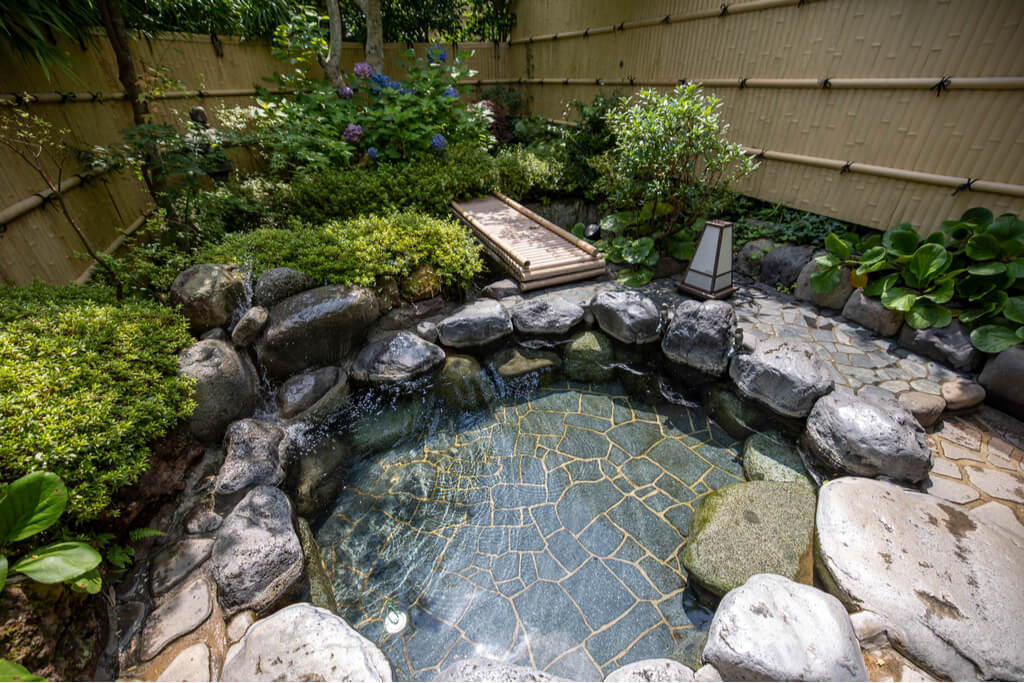
Kiga Onsen
Kiga Onsen, Hakone’s second oldest hot spring, has a legendary history. Yoshinari Kiga, a samurai serving the Kamakura Shogunate, was injured in battle. He sought refuge at the onsen, where his wounds seemingly miraculously healed, allowing him to return to battle. Recognized as one of Hakone’s original seven onsens, the waters were believed to enhance fertility and were favored by the concubines during the Edo period.
Sokokura Onsen
Another one of the original seven Hakone onsen, Sokokura, gained a reputation among Japanese people during the Meiji period when all the foreigners flocked to Miyanoshita. Sokokura Onsen is home to a legendary Taiko stone bath that Toyotomi Hideyoshi carved out when he attacked Odawara during the Warring States period.
Ninotaira Onsen
Famous for its Hakone Open Air Museum, Ninotairo is located between the Kowakudani and Gora Onsen. It was initially a resting area for people working in those two areas. However, people discovered this hot spring in 1963. Steadily gaining popularity over the years, Ninotaira’s premier communal bath, “Kame no Yu” (turtle’s bath), is famous for its significant effects on the skin, leaving it soft and silky without needing soap.
Kowakudani Onsen
Once called Kojigoku (Little Hell), the name was changed to Kowakudani Onsen when Emperor Meiji made an Imperial visit to the area. Home to the now-closed Hotel Hakone Kawakien, the first large-scale hotel in Hakone, and the famous onsen theme park, Yunessun, the area is abundant with spas, ryokan, and other natural attractions. Many local ryokan also offer private onsen as part of their accomodations.
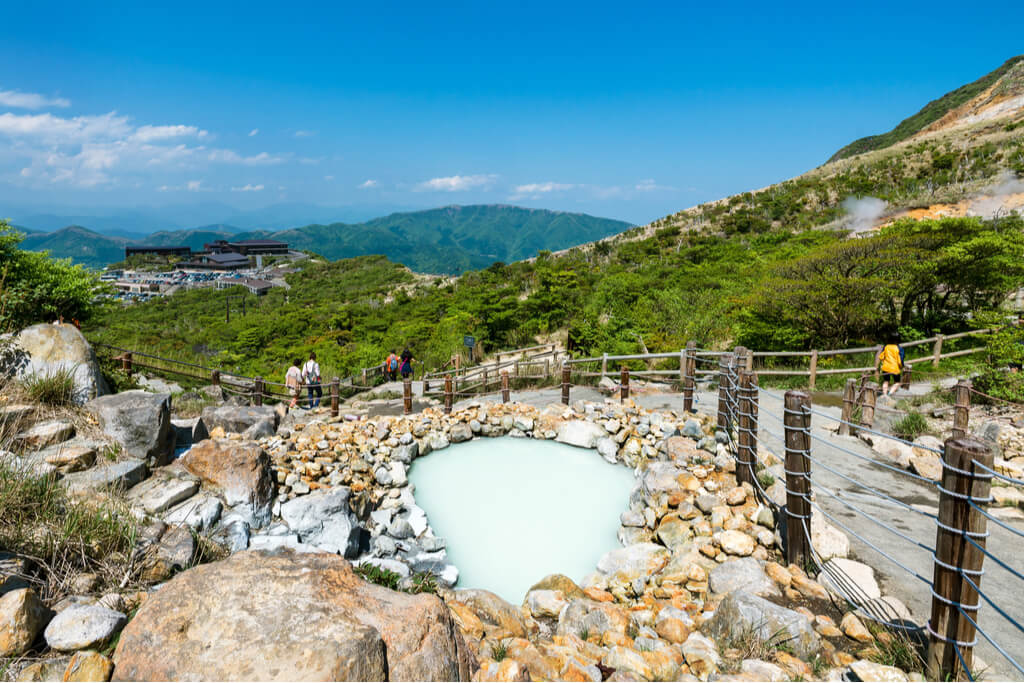
Gora Onsen
Once used as a villa for politicians, businessmen, and academics in the Meiji era, Gora Onsen is home to five types of onsen, the most popular in the Hakone region. Today, people enjoy a stopover in Gora for a traditional onsen experience before continuing to their destination.
Miyagino Onsen
A relative discovery, Miyagino Onsen is a small village hot spring resort with a climate like Sendai City. Tourists often come to see the remains of the Miyagino Castle and walk along the oldest Usui road in Hakone. In spring, the Hayakawa riverbank has 500 meters of Sakura (cherry blossom) trees.
Sengokuhara Onsen
An onsen resort in a vast grassland, the waters were originally drawn from Owakudani in 1736. To this day, Sengokuhara uses water from Owakudani, Ubako, and Lake Ashi to supply the local hotels and ryokan. That is to say, the area is a Western-style summer resort from the Taisho era to the Showa era and manages to preserve the nature around the area, creating the iconic image that tourists associate Sengokuhara with.
Ubako Onsen
Ubako Onsen gets its waters from a rocky spring and is considered a holy place near Mt. Kamiyama, a mountain that was once worshipped. Accordingly, legend tells that Kintaro, an ancient warrior, lay in the waters to heal his eyes. Today, people travel to Ubako Onsen to alleviate their eye illnesses.
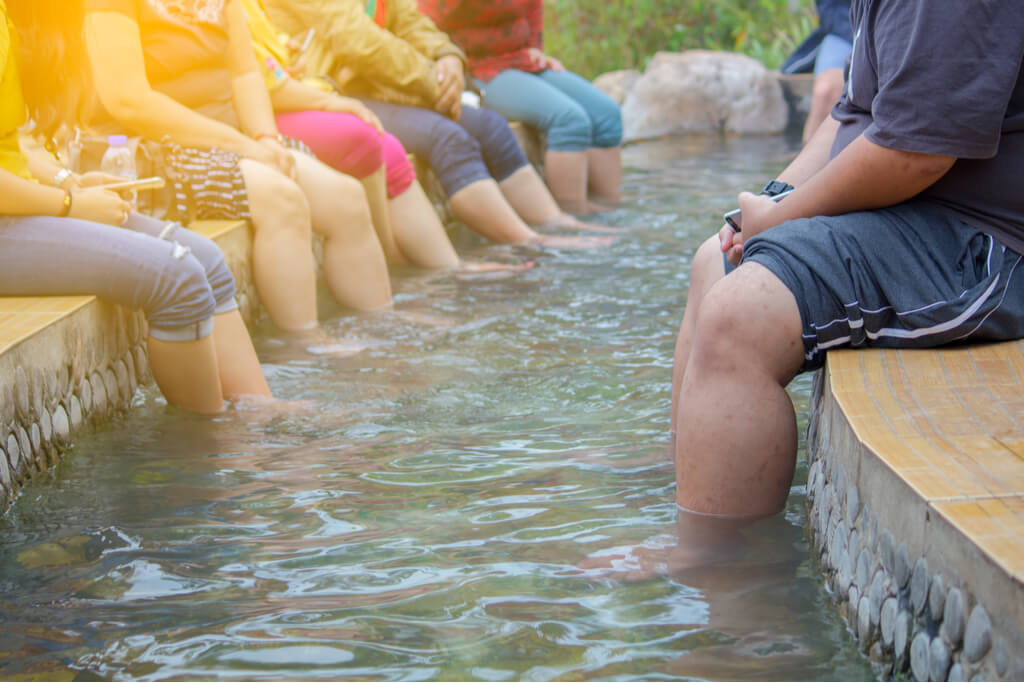
Ashinoyu Onsen
Ashinoyu Onsen is the only place in Hakone where one can find an alkaline-sulfate onsen bath. To put it another way, it’s the highest of the original seven onsen; many travelers sought this rare hot spring to cure their diseases. The onsen here also appears in many literary works. As a result, Ashinoyu Onsen holds tight to its historical bonds, and many historical sites can be seen throughout the area.
Yunohanazawa Onsen
Yunohanazawa Onsen, a tranquil hot spring area near the base of Mt. Komagatake, boasts numerous historical sites. The name derives from the flower-shaped mineral deposits in the natural hot springs. Moreover, Yunohanazawa Onsen holds the distinction of being the highest among all Hakone Onsen.
Hakone Onsen with Views of Mt. Fuji
Takogawa Onsen
The newest of Hakone’s onsen, Takogawa Onsen, was called Motohakone Onsen before being classified as a separate onsen. Additionally, Takogawa Onsen features an aquarium and a gorgeous view of Lake Ashi and Mt. Fuji at the Hakone-en Resort Complex.
Ashinoko Onsen
Ashinoko Onsen is the second newest onsen in Hakone. Generally known as an inn town throughout the old Tokaido road, the area allows you to discover Mt. Fuji and Lake Ashi as the main attractions. Without a doubt, tourists gather at Ashinoko throughout the years to partake in their festivals, earning Ashinoko Onsen a reputation as an all-season resort.
Hottarakashi Onsen
Hottarakashi Onsen is a hot spring in Hakone with stunning views of Mt. Fuji. More specifically, the outdoor bath is a popular spot to relax and enjoy the scenic beauty of Japan’s iconic mountain. The onsen also offers indoor baths and a sauna, perfect for a refreshing soak after exploring Hakone’s attractions.
The water temperature can also reach 45 degrees Celsius, providing a therapeutic experience for tired muscles. Also, Hottarakashi Onsen is open until late at night, allowing visitors to enjoy the beautiful night views of the mountain while soaking in the hot springs.
Overall, Hakone is a true gem among Japan’s onsen destinations, offering a unique blend of natural beauty, rich history, and therapeutic relaxation. From the iconic views of Mount Fuji from an open-air bath to the serene tranquility of Yunohanazawa Onsen nestled at the foot of Mt. Komagatake, there’s an onsen experience for every traveler’s preference. Not to mention, the artful harmony of traditional and modern onsen resorts in this region showcases the timeless appeal of Japan’s hot spring culture. Have you ever been to Hakone? Did you know about these onsen resorts? Which one would you like to go to?”

Discover authentic flavors with Sakuraco
Get Sakuraco 

Discover authentic flavors with Sakuraco
Get Sakuraco 
Related Articles

Mount Fuji Snacks That You Need to Try This Summer!
Mount Fuji, Japan’s highest and most iconic peak, has long served as a muse not just for artists and poets, but also for confectioners. Its symmetry and snow-capped grandeur make it an ideal motif for culinary artisans nationwide. These treats capture the spirit of Fuji in edible form, reflecting regional ingredients, seasonal symbolism, and time-honored techniques.

Okinawa City is Home to Southeast Botanical Gardens!
The Southeast Botanical Gardens in Okinawa are one of the island’s most beautiful and relaxing destinations. In Okinawa City, they offer a lush escape filled with tropical plants, ponds, animals, and seasonal displays.

Mount Fuji Tour: Great Adventures Await You This Summer!
Mount Fuji is one of the most famous landmarks in Japan. People worldwide visit to see its beauty and enjoy exciting yearly outdoor activities!

Mikoshi: Why Are These Portable Shrines So Important?
Japan’s summer festivals are known for their energy, color, and tradition. And at the heart of many lies the mikoshi.



